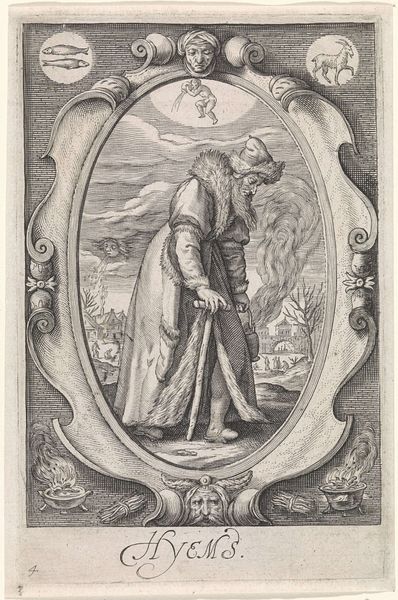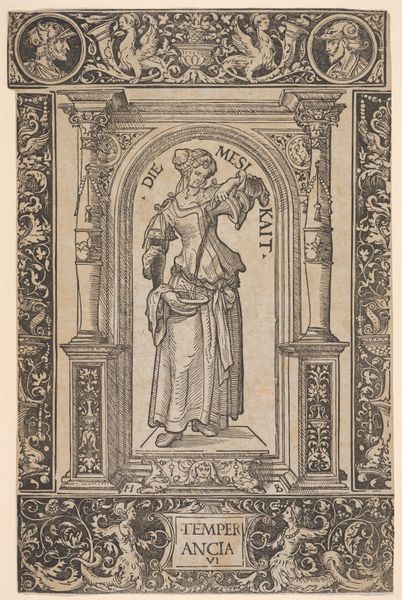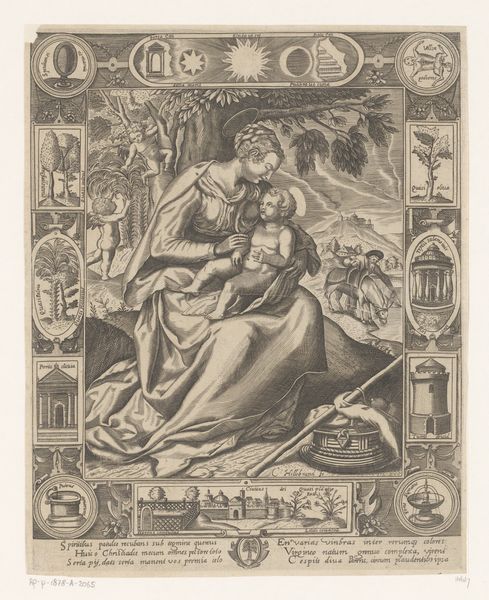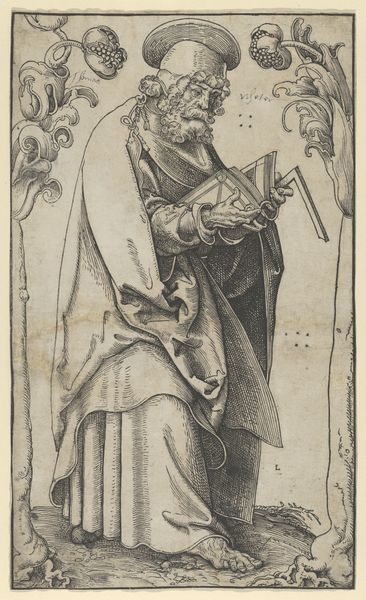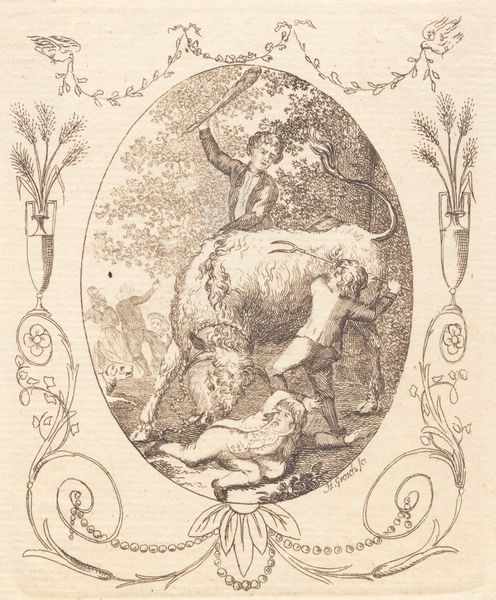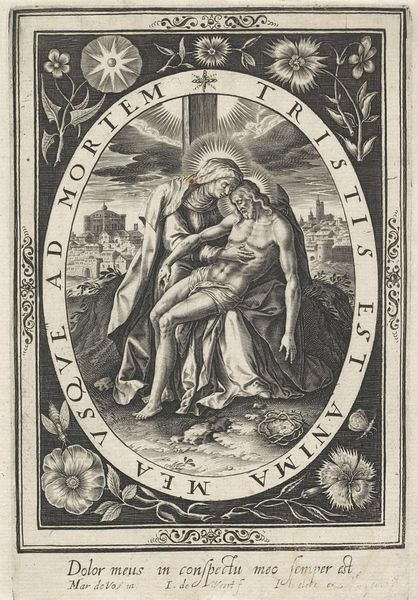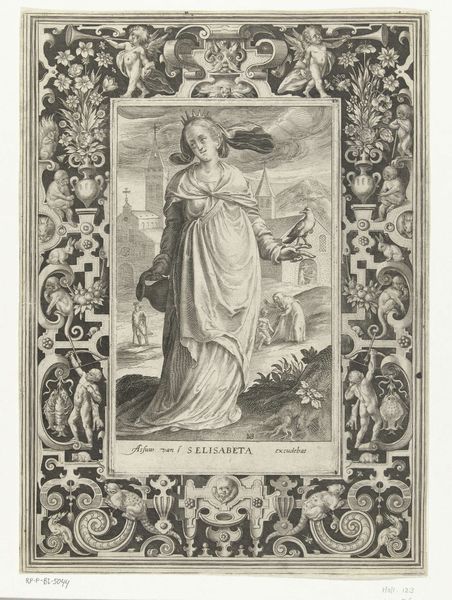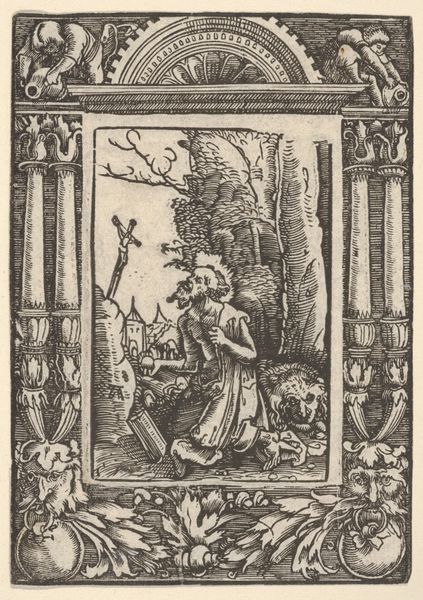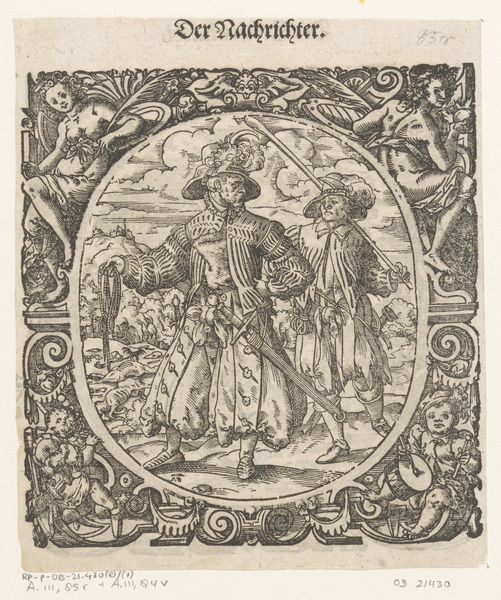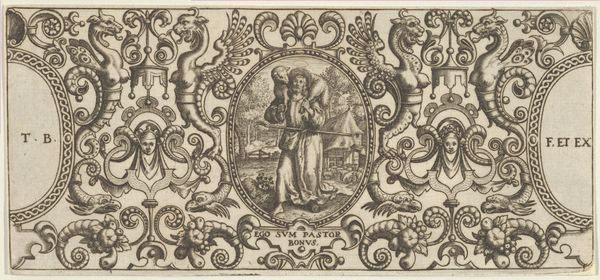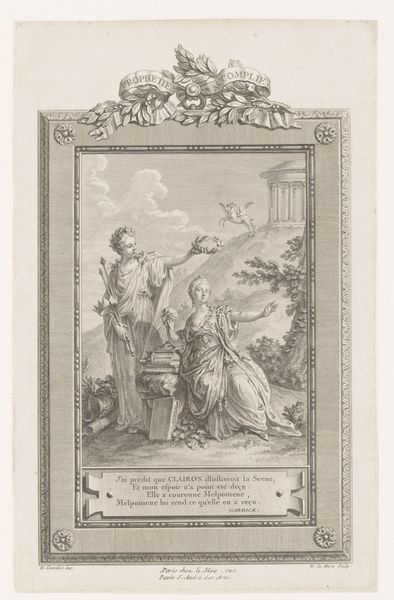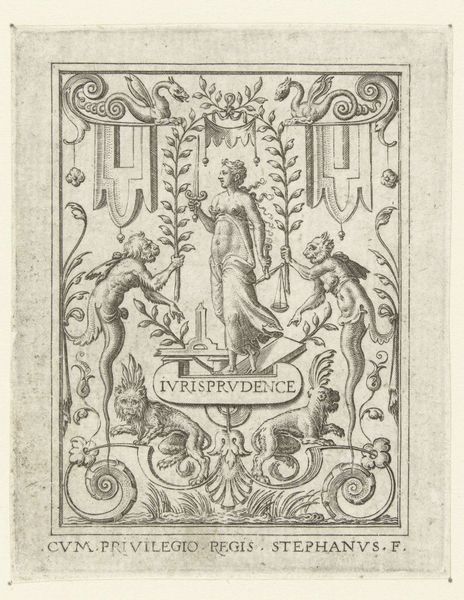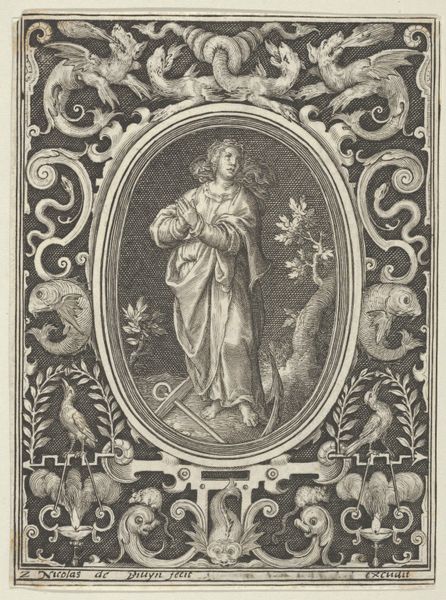
drawing, print, etching, engraving
#
portrait
#
drawing
# print
#
etching
#
landscape
#
11_renaissance
#
pencil drawing
#
northern-renaissance
#
engraving
Dimensions: 225 mm (height) x 145 mm (width) (plademaal)
Editor: This is Jacob Matham’s "Vinter," an engraving from around 1600. The figure is framed so elaborately; I immediately sense a symbolic narrative here. How do you interpret this work through a cultural lens? Curator: Looking at “Vinter” requires us to unpack the historical constructions of age, labor, and the cyclical nature of life as perceived during the Renaissance. Notice how winter, represented by the elderly man, isn't just a season. How does he carry the weight of time? How is this related to the natural cycles around the lower social strata of the period? Editor: So, it's not just about winter as a time of cold, but as a representation of the elderly and their role? Curator: Exactly. Matham is engaging with a broader discourse around labor, gender, class, and aging. The imagery speaks to how societies often marginalize those deemed unproductive, drawing parallels between the dormancy of winter and the perceived decline of older people's social contributions. How do the background images alter your reading of this classist analogy? Editor: I see. So, while seemingly about a season, it's subtly critiquing societal biases and labor dynamics? Curator: Precisely. By examining the socio-economic implications embedded in the imagery, we reveal not only Matham's artistry, but also the period's attitudes towards the old, poor, and disabled. Editor: That's really eye-opening! I’d have missed the social commentary if you hadn't pointed out the symbolism and its context. Curator: Engaging with art history is like entering a dialogue with the past, shedding light on power structures, social norms, and individual agency. Editor: I am definitely walking away with a richer appreciation for Jacob Matham’s social message.
Comments
No comments
Be the first to comment and join the conversation on the ultimate creative platform.
